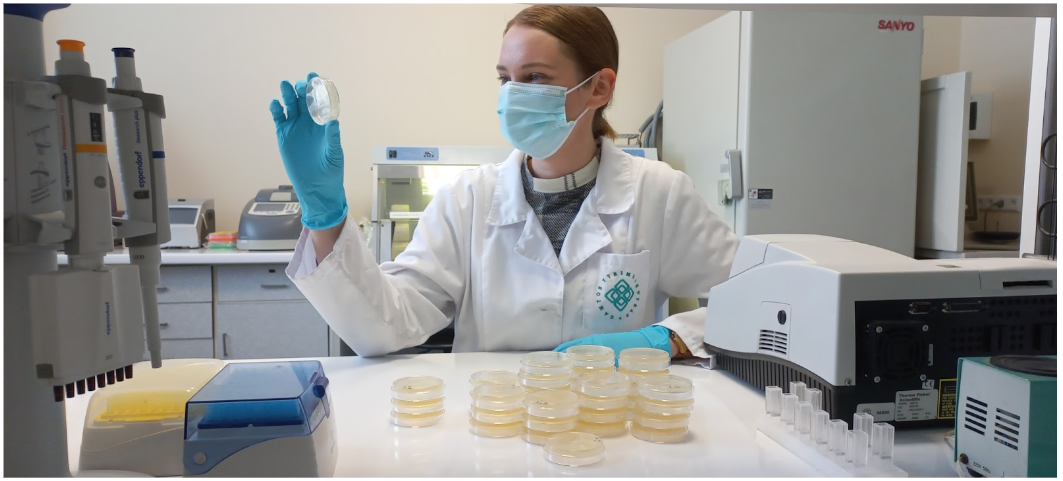Striking results graphene oxide and nanosilver GC HALO® ink highly effective against S.aureus and E.coli
A Lithuanian-led Eureka study (Eureka NEGOI) that is testing a unique nanotechnology ink formulation, GC Halo®, against Staphylococcus aureus and Escherichia coli, has shown significant results in destroying the bacteria.
Dr. Bazilė Ravoitytė
The aim of the project was to develop innovative nanotechnology and graphene oxide based antimicrobial inks and coatings and was awarded funding in 2021 by Lithuania’s Agency for Science, Innovation and Technology (MITA). The project sought to test GC Halo’s efficacy on textile samples that could be used in air filters to enhance indoor air quality.
The Nature Research Center in Vilnius, Lithuania, formed part of the testing and evaluation of the ink’s effectiveness which were applied on textile samples and tested according to the ISO 20743 standard. A log 7 to log 8.8 reduction in bacteria count (at least 99.99999%) against S. aureus was observed in the textile samples that were coated with GC Halo after 24 hours.
Dr. Elena Servienė and Dr. Bazilė Ravoitytė from The Nature Research Center say “We are happy to contribute to the research of innovative antibacterial formulations based on silver and graphene oxide nanoparticles, created by nanotechnology leaders and our highly professional partners from Graphene Composites and Pro for Nano. We have tested several antibacterial inks and textiles covered with novel nanomaterials. The obtained results are promising for the development of antibacterial products against Gram-positive and Gram-negative bacteria; we have observed total elimination of Gram-positive Staphylococcus aureus bacteria in the tested cotton and PET textiles covered with even the smallest tested concentrations on innovative silver and graphene oxide inks. The effectiveness is striking - the antibacterial values for S. aureus bacteria were from 7.0 to 8.8. We are expecting to test the plastic surfaces covered with novel formulations and evaluate their antibacterial effectiveness until the end of the EUREKA project.“
“Participation in this project has allowed us to explore ink formulation variations outside of their normal operating envelope. This has not only allowed the optimal formulation to be achieved in terms of efficacy against microbial and fungal pathogens, but has also allowed the study of layer morphology and chemistry to be assessed directly against ink efficacy which has opened up other areas of development for the future” Dr. Steve Devine, CTO at GC says. “Working within the Eureka consortium has been an absolute pleasure. Each of the partners has been extremely efficient in providing both data and feedback within the programme, and an excellent rapport has been developed which has allowed a free-flow of ideas and data within the group.”
Dr. Gediminas Galinis: “The GC Halo® ink was formulated and applied to textiles making a thin barrier of graphene oxide and nanosilver. The applied coating proved to be very effective. The count of bacteria decreased from tens of millions to single digits in 24 hours. This is an amazing result and it means that better air filters can be produced to ensure clean and fresh air for hospitals, schools and other public locations. The project funding also contributed towards the development of a new nanomaterial production reactor design. The new reactor will be hopefully built next year to increase the production scale to 1-30 kg per day and to lower the production cost. We are excited to address the scale and cost challenges and to make nanomaterials even more competitive for air filtering applications.”



